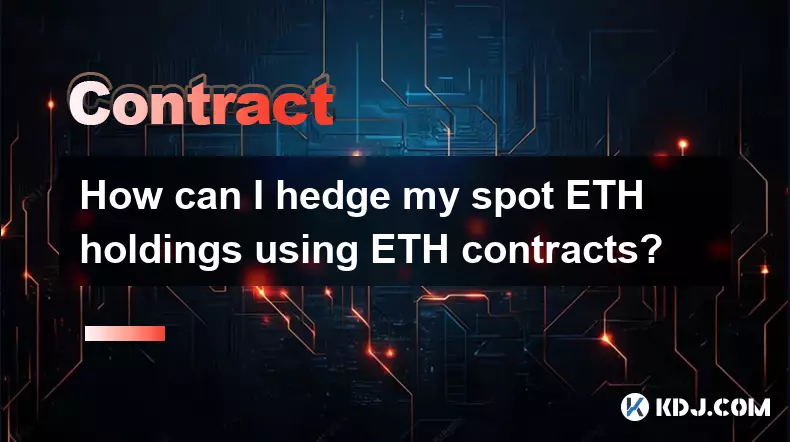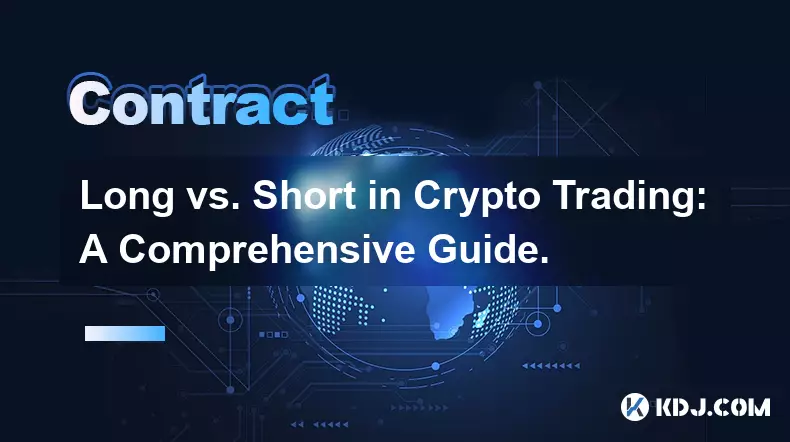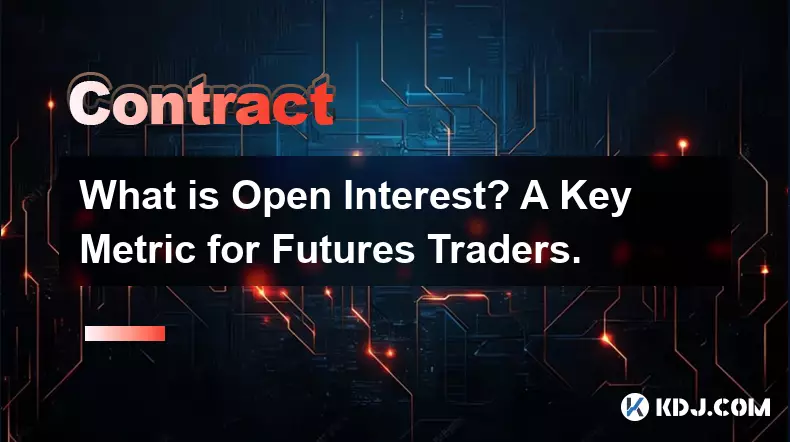-
 bitcoin
bitcoin $107015.826941 USD
-2.18% -
 ethereum
ethereum $3637.352324 USD
-5.18% -
 tether
tether $0.999831 USD
-0.02% -
 xrp
xrp $2.338078 USD
-6.23% -
 bnb
bnb $998.272150 USD
-6.97% -
 solana
solana $167.598257 USD
-10.12% -
 usd-coin
usd-coin $0.999863 USD
0.01% -
 tron
tron $0.282573 USD
-5.09% -
 dogecoin
dogecoin $0.169891 USD
-7.39% -
 cardano
cardano $0.557554 USD
-7.03% -
 hyperliquid
hyperliquid $39.914802 USD
-5.85% -
 chainlink
chainlink $15.414549 USD
-9.97% -
 bitcoin-cash
bitcoin-cash $510.361911 USD
-4.26% -
 ethena-usde
ethena-usde $0.999194 USD
-0.03% -
 stellar
stellar $0.282092 USD
-6.07%
How can I hedge my spot ETH holdings using ETH contracts?
Hedge spot ETH holdings using futures, perpetuals, or put options to mitigate downside risk while considering funding costs, volatility, and exchange reliability.
Oct 28, 2025 at 08:37 pm

Hedging Spot ETH Holdings with ETH Contracts
1. One of the most effective methods to hedge spot Ethereum (ETH) holdings is by utilizing futures contracts on regulated exchanges. By taking a short position in ETH futures equivalent to the amount of ETH held in spot, investors can offset potential downside risk. If the price of ETH declines, gains from the short futures position can neutralize losses in the spot portfolio.
2. Another approach involves using perpetual swap contracts, which are widely available on major cryptocurrency derivatives platforms. Traders can open a short perpetual position proportional to their spot holdings. Since perpetuals closely track the spot price through funding rate mechanisms, they offer a dynamic and liquid way to maintain a market-neutral stance.
3. The size of the hedge should match the value of the spot position to achieve full protection. For example, holding 10 ETH in cold storage could be hedged by shorting 10 ETH worth of futures or perps. Regular monitoring is essential as price fluctuations may require position adjustments to maintain the desired hedge ratio.
4. It’s crucial to consider counterparty risk when selecting an exchange for contract trading. Platforms with strong collateralization, transparent liquidation mechanisms, and deep order books provide more reliable environments for executing hedges without slippage or default concerns.
5. Funding rates in perpetual contracts must also be accounted for, as prolonged short positions may incur periodic payments. These costs accumulate over time and can erode profits if the spot price remains stable or increases slightly. Hedgers should evaluate whether the cost of carry justifies the insurance provided by the short position.
Using Options for Downside Protection
1. Buying put options on ETH offers an alternative hedging strategy that limits downside exposure while preserving upside potential. A put option grants the holder the right to sell ETH at a predetermined strike price before expiration. This acts as an insurance policy against sharp corrections.
2. For instance, an investor holding 20 ETH might purchase put options with a strike price near the current market value. If ETH drops significantly, the increase in the put’s value offsets the decline in the spot portfolio. If ETH rises, the only loss is the premium paid for the options.
The primary advantage of using puts is that they cap maximum loss without restricting gains.3. Option buyers must choose between American-style and European-style contracts based on liquidity and exercise flexibility. American-style allows early exercise, which can be useful during volatile periods, while European-style settles only at expiry, often offering tighter pricing.
4. Implied volatility plays a critical role in option premiums. During times of high uncertainty, such as regulatory announcements or macroeconomic shifts, implied volatility spikes can make puts expensive. Timing the purchase of options around low-volatility periods improves cost efficiency.
Leveraging Delta-Neutral Strategies
1. Advanced traders may employ delta-neutral strategies by combining spot ETH with short call options or long put options to balance directional exposure. Delta measures how much an option’s price changes relative to the underlying asset, and a delta of -1.0 in derivatives offsets +1.0 from spot holdings.
2. Selling covered calls is another method where investors write call options against their existing ETH. While this generates premium income, it caps upside above the strike price. This strategy works best in sideways or mildly bullish markets.
3. Dynamic hedging involves continuously adjusting derivative positions to maintain neutrality as market conditions change. Automated bots or algorithmic systems can help rebalance hedges based on real-time delta calculations, reducing manual oversight.
4. Portfolio managers often use options Greeks—delta, gamma, vega, and theta—to fine-tune risk parameters. Monitoring these metrics ensures the hedge remains effective across different volatility regimes and time horizons.
Properly structured delta-neutral positions reduce sensitivity to price swings while allowing participation in yield-generating activities like staking.Practical Execution Tips
1. Always verify the settlement mechanism of the contract—cash-settled versus physically delivered—as it affects final payout and tax implications. Physically deliverable contracts may require actual transfer of ETH, complicating custody arrangements.
2. Use trusted custodial solutions when holding large spot positions alongside open derivatives. Cold storage combined with multi-signature wallets enhances security, especially when leveraged instruments are involved.
3. Keep sufficient margin reserves to avoid liquidation of short futures or written options during sudden rallies. Unexpected volatility can trigger margin calls even in well-hedged portfolios.
4. Backtest hedging strategies using historical data to assess performance under various market cycles. Simulating drawdowns helps determine optimal hedge ratios and instrument selection.
Frequently Asked Questions
What happens to my hedge if ETH undergoes a hard fork?During a hard fork, both spot holdings and futures/options contracts may be subject to exchange-specific rules. Some platforms credit users with tokens from the new chain; others do not. Hedgers must review each exchange’s fork policy and adjust positions accordingly to avoid unintended exposure.
Can I hedge using stablecoin-denominated contracts?Yes, many exchanges offer ETH/USD or ETH/USDT perpetual and futures contracts priced in stablecoins. These are commonly used for hedging because their value remains pegged to fiat equivalents, simplifying profit and loss calculations.
Is it possible to over-hedge ETH positions?Absolutely. Over-hedging occurs when the derivative position exceeds the spot holding, resulting in a net short exposure. This transforms the strategy from risk mitigation into speculative betting on price declines, increasing liability during bull runs.
Do staked ETH holdings affect hedging decisions?Staked ETH introduces illiquidity due to withdrawal restrictions. Hedging staked positions requires longer-dated instruments or rolling short-term contracts. Additionally, rewards from staking improve portfolio yield but don’t alter the need for price risk management.
Disclaimer:info@kdj.com
The information provided is not trading advice. kdj.com does not assume any responsibility for any investments made based on the information provided in this article. Cryptocurrencies are highly volatile and it is highly recommended that you invest with caution after thorough research!
If you believe that the content used on this website infringes your copyright, please contact us immediately (info@kdj.com) and we will delete it promptly.
- ADA Slowdown, Maxi Doge, and the Meme Coin Mania: What's the Hype?
- 2025-11-04 20:50:12
- Ethereum, Crypto, and the $1 Target: A New Era?
- 2025-11-04 21:00:12
- Zone Nine: Nihilation - A Deep Dive into the Zombie Survival Closed Playtest
- 2025-11-04 21:10:12
- Trust Wallet VIP Program: TWT Powers a New Era of User Loyalty
- 2025-11-04 21:05:01
- Stewards Inc., Token-for-Equity, and the Dolomite PIPE: A New Era for Digital Asset Treasury
- 2025-11-04 21:05:14
- Meme Coins, Degen Alpha, and Market Updates: Riding the Crypto Wave in Style
- 2025-11-04 21:10:02
Related knowledge

Long vs. Short in Crypto Trading: A Comprehensive Guide.
Nov 04,2025 at 07:39pm
Understanding Long and Short Positions in Cryptocurrency Markets1. In crypto trading, taking a long position means buying a cryptocurrency with the ex...

The 2025 Guide to Profitable Crypto Futures and Derivatives Trading.
Nov 01,2025 at 07:39pm
Understanding Crypto Futures and Derivatives in 20251. Crypto futures are financial contracts obligating the buyer to purchase, or the seller to sell,...

Navigating a Bear Market: Shorting Strategies for Crypto Futures.
Nov 03,2025 at 07:18pm
Understanding Bear Market Dynamics in Crypto1. A bear market in the cryptocurrency space is characterized by prolonged price declines, often driven by...

What is Open Interest? A Key Metric for Futures Traders.
Nov 03,2025 at 11:18pm
Understanding Open Interest in Cryptocurrency Futures1. Open interest refers to the total number of active futures contracts that have not been settle...

Identifying Support and Resistance Levels for Crypto Contract Trading.
Nov 04,2025 at 06:15pm
Understanding Support and Resistance in Crypto Markets1. Support and resistance levels are foundational concepts in technical analysis, especially wit...

A Deep Dive into Market Orders vs. Limit Orders for Futures.
Nov 02,2025 at 10:19pm
Understanding Market Orders in Futures Trading1. A market order is an instruction to buy or sell a futures contract immediately at the best available ...

Long vs. Short in Crypto Trading: A Comprehensive Guide.
Nov 04,2025 at 07:39pm
Understanding Long and Short Positions in Cryptocurrency Markets1. In crypto trading, taking a long position means buying a cryptocurrency with the ex...

The 2025 Guide to Profitable Crypto Futures and Derivatives Trading.
Nov 01,2025 at 07:39pm
Understanding Crypto Futures and Derivatives in 20251. Crypto futures are financial contracts obligating the buyer to purchase, or the seller to sell,...

Navigating a Bear Market: Shorting Strategies for Crypto Futures.
Nov 03,2025 at 07:18pm
Understanding Bear Market Dynamics in Crypto1. A bear market in the cryptocurrency space is characterized by prolonged price declines, often driven by...

What is Open Interest? A Key Metric for Futures Traders.
Nov 03,2025 at 11:18pm
Understanding Open Interest in Cryptocurrency Futures1. Open interest refers to the total number of active futures contracts that have not been settle...

Identifying Support and Resistance Levels for Crypto Contract Trading.
Nov 04,2025 at 06:15pm
Understanding Support and Resistance in Crypto Markets1. Support and resistance levels are foundational concepts in technical analysis, especially wit...

A Deep Dive into Market Orders vs. Limit Orders for Futures.
Nov 02,2025 at 10:19pm
Understanding Market Orders in Futures Trading1. A market order is an instruction to buy or sell a futures contract immediately at the best available ...
See all articles










































































